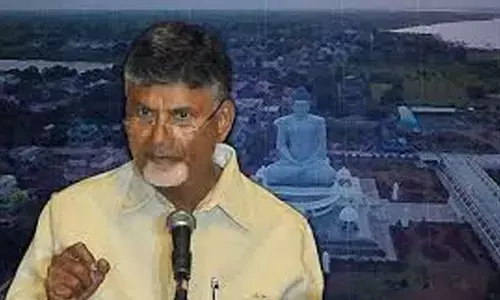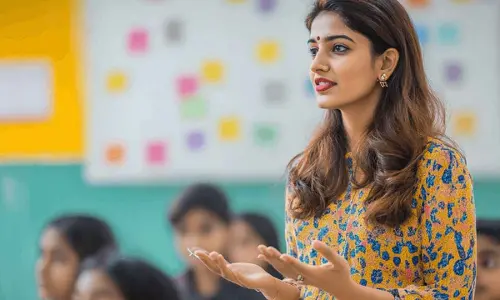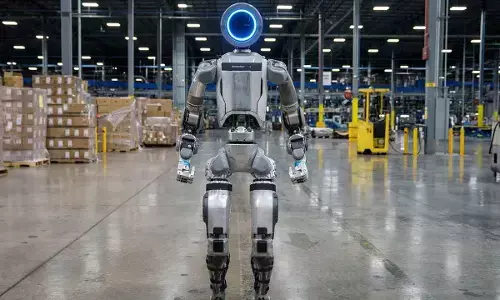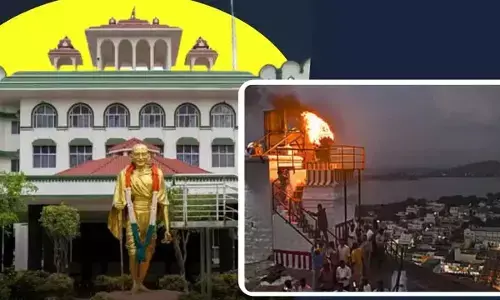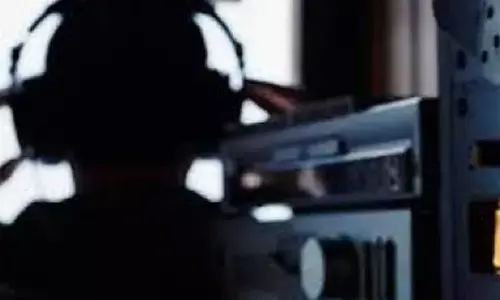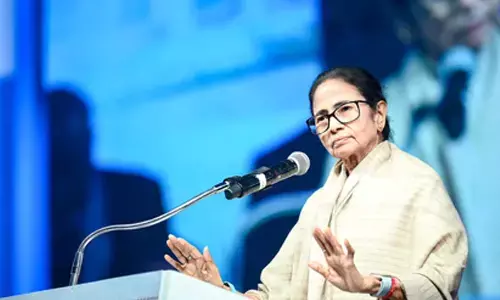One year on, LNJP Covid warriors recall havoc

One year on, LNJP Covid warriors recall havoc
New Delhi: At state-run Lok Nayak Jai Prakash Narayan Hospital, the nerve centre of Delhi's battle against the COVID-19 pandemic in 2020, many doctors at times had to wear PPE kits for nearly 18 hours to attend to struggling patients in the sweltering heat when its first wave had hit the city and the mortuary was piled up with bodies.
It's been one year since the outbreak of the COVID-19 pandemic in the national capital, and daily cases and death counts have both come down significantly, and scenes of distress in the hospital's corridors and outside morgue have been replaced by talks about the ongoing vaccination.
It was on March 1 that the first case of COVID-19 was recorded in the city, a few months after the "unpredictable virus" had wreaked havoc in Wuhan in China, where it was first reported globally. Rohit Datta, a businessman from east Delhi, who had returned from Italy last year, tested positive for the new virus that had left the world puzzled and in a grip of extreme fear.
The world had not seen anything like this before since the Spanish Flu of 1918, and certainly not in India. As the cases began to spiral in large parts of the country, including Delhi, a nationwide lockdown was imposed late March by the government to contain the spread of the virus.
While most people were practically left confined to their houses for several months and work for home became the new normal, healthcare workers faced the heavy brunt of the pandemic, as doctors, nurses, served patients day in and day out, without any weekly breaks, isolated from their family members for days, weeks or even months.
Amit Anand, a 35-year-doctor at the 2,000-bed LNJP Hospital who has been on duty since the outbreak of the pandemic here, said, "It's one year of COVID in Delhi, and I also met my family back home, after a gap of one year." The Begusarai native, whose wife also holds an MBBS degree, told PTI, "I met my wife and son, now two-and-a-half years old, in Bokaro this February, and he almost didn't recognise me.
The pandemic literally separated us from our families. But we have to do our job, which we have chosen, so that motivated us throughout this very tough period." LNJP Hospital, now a partial COVID-19 facility, was the first hospital to be converted into a dedicated coronavirus facility in Delhi, and soon Rajiv Gandhi Super Speciality Hospital (RGSSH), GTB Hospital and other government hospitals were also roped in, besides reserving beds in private hospitals to treat increasing number of patients.
On June 23, the national capital had reported its first wave of the infection with 3,947 cases, the highest single-day spike till then. Delhi went into a war mode, with government efforts to combat the pandemic being led by 'corona warriors' in hospitals in white lab coats and police in streets wearing khaki.
Ritu Saxena, Emergency Department chief, at the hospital, which has treated a record over 11,000 COVID-19 patients till date, recalled that in June when the first wave had hit Delhi, a large number of people were dying daily and bodies would pile up beyond capacity in the mortuary.
"Some doctors at times had to wear PPE (personal protective equipment) kits for 18 hours in a day in harsh summer when temperature had gone above 40 degrees Celsius to attend to patients," she said. Delhi then battled the second and third waves of the pandemic in September (over 4,000 daily cases multiple times) and November respectively, the latter being the worst this year, but the city known for its resilience, soldiered on and eventually manage to surmount it.
The highest single-day spike of 8,593 cases in Delhi till date was reported on November 11, while on November 19 the city recorded 131 COVID-19 deaths, the highest single-day fatality count till date. Suresh Kumar, Medical Director of the LNJP Hospital and a COVID-19 survivor, says the past one year of battling the pandemic had taught "valuable lessons" to meet the challenges ahead.
"In this period, we also equipped ourselves with more medical infrastructure. So, we had 155 oxygen supply pipe lines in the beginning for beds, besides oxygen cylinders. We expanded it gradually to 1,000, to meet the 2,000-bed requirements.
Also, we now know at least something about this virus and its behaviour," he told PTI. As one year gets over since the outbreak of the pandemic, while deaths have reduced significantly, daily cases have shown an upsurge in the last few days.
Delhi recorded 243 new COVID-19 cases on Saturday, while three fresh fatalities pushed the death toll to 10,909, according to data shared by the city health department. This was the fourth successive day when daily cases count have stood at the 200-mark or beyond.
Delhi had recorded 94 fresh COVID-19 cases on February 16, the lowest in over nine months. Doctors on Friday warned that the numbers could go up in the coming months.
While the vaccination drive which started on January 16 is currently underway, Kumar urged people to continue to wear masks and adhere to safety norms as the vaccine can only to cut the transmission of the virus.
Asked what was the most memorable moment of this one year gone by, he said, "Entire period will stay with us in our memories, but feted by the government with floral showers from helicopters really touched our heart."










